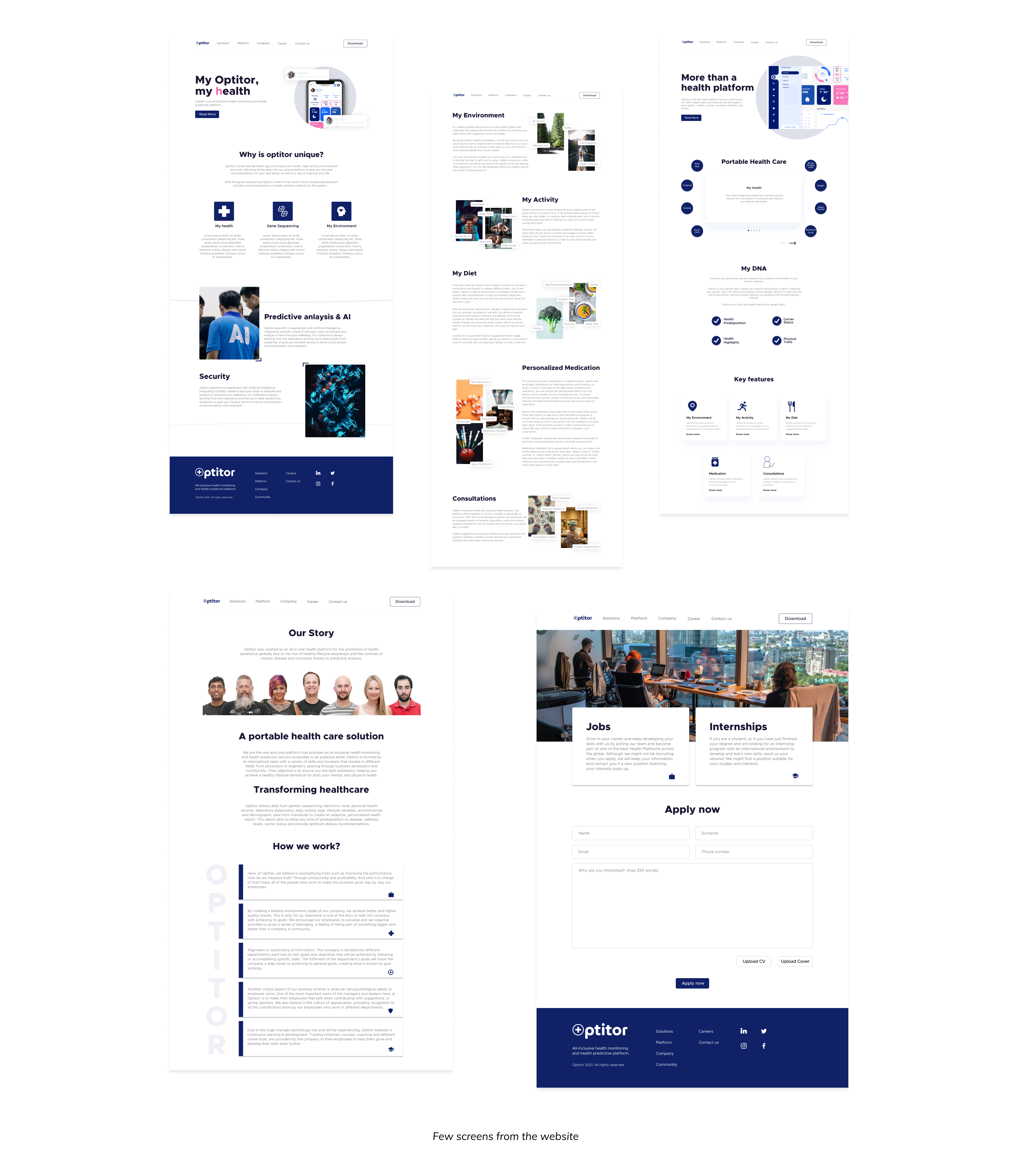These days, the world is transforming regarding how we treat our health. Mobile devices, tablets, and wearable devices make it possible to have continuous access to personal health information. These devices can collect data continuously and provide insights into a user’s health and fitness information which could help health providers create a more personalized treatment plan.
Problem
This project addresses the problem of a shortage of applications focusing on a person’s health with daily activity tracking, reminders for medical prescriptions, nutrition advice, and even live advice from health experts. This data will then help in the early diagnosis of potential medical conditions, as well as assist scientific researchers’ understanding of existing medical conditions through the participation in medical research that this application offers.
Proposal
Create an application (web & mobile) that could demonstrate a positive impact on the healthcare sphere through the integration of health and fitness data from a user device and active health records in one place, which can make interesting correlations and suggest changes to the users’ habits and help in preventing or dealing with their health conditions.
Solution: Optitor Application
Optitor is a health promotion and telemedicine platform equipped with AI and ML, allowing in-depth and innovative analysis of user’s health data by consolidating health records and real-time active data. This allows Optitor to curate user-specific health-promoting insights. By using data mining, Optitor merges various health data points with the user’s active data, such as diet, physical activity, environment, medications, and vital data including heartbeat and hours of sleep. We strongly believe that once these services are combined and the resultant information from them is cross-linked, thanks to highly trained AI, users will face a whole new experience in the pursuit of a healthier life. Optitor presents itself as a verticalized solution to feed users, healthcare workers, and itself with thoughtful insights.
Research
We carried out research on our main competitors. However, there is no platform that covers all these functions in one application,
so the five best applications from the different areas of the project were Apple Med Kit, Wellframe, Truepill, and Cquentia.
In addition, it was discovered that Health App from Apple was the closest to the ActiveLife application because it gathers all
health-related information in one place, which was convenient for users and helps them to be on track with valuable information.
We also did a survey to carry more insights into our target users. Through collecting all information from the survey, existing research had revealed several types of users with diverse needs which were combined in two personas that manifest the needs and weak points of the existing applications.
So far so good
Till this point, the project had a solid idea and understanding about users and core functions of the application but no definite structure and functionality. The goal of this stage of the project was to organize and structure all the content from the research phase. Also, creating the basic flow forced us to think about each step on the path of the users throughout the solution. The basic flow initially was created on paper and after was transferred in digital format.
Wireframe
Using the structure of the user flow, the wireframes were designed. It helped to focus on the functionality rather than on visual appearance. The main screen of the application is the dashboard, where a user can find a prescription list, doctor’s appointments, blood tests, and daily activities for the day. Also, at this stage of the project, the interactive prototype was created in order to test the usability and logic of the application.
Final Product
After a series of usability tests on our low-fi prototype, we created the final hi-fi prototype of our product.
The whole app was meant to provide a seamless experience, so it was decided to go with a minimalist approach that
would both make it easier for a user to navigate throughout the application and clearly display all the data.
In order to keep the experience intuitive on the project, a consistent design system was built. Atomic principles were used
in order to create all components of the project which could be used in the future development of the project like websites,
new sections of the application, or printables. For the majority of elements, different stages were created like active,
inactive, or disabled.
Website Design
Optitor website is a responsive website designed by my team to build an empowering connection between holistic practitioners and general consumers through a community platform. The site displays a relaxed and friendly feel, and its functions are quick and simple to use. The major role of the website is to give summarized information about our application and walk them through the application features. Also, users are able to download the application either web or mobile using the website.

Next Steps
The application and website is currently under development. The next step would be finish the engineering sprint, deploy the app and website online. Then, implement all those activites and needs that the app requires to function properly, for example maintaining recors or recruiting doctors. With few more steps and planning, website and the app would be ready for the launch.
Conclusion and Reflection
Optitor has the potential to change healthcare by empowering users and helping them take control of their health and also,
will allow scientific researchers with a more extensive database for their studies.
Designing the app has been a challenging and satisfying journey.
Only after in-depth research in the medical sphere and survey, the project become more relevant and truly valuable for users.